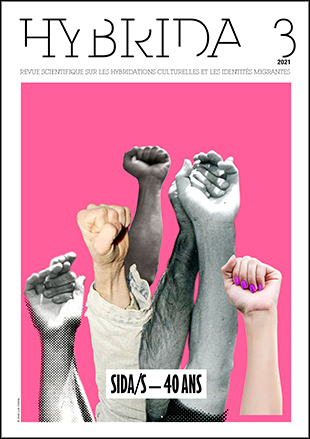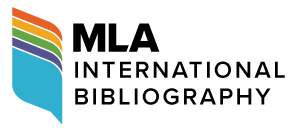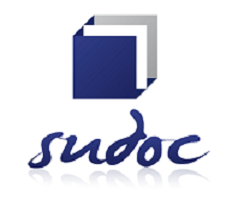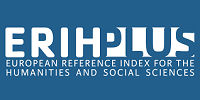Colonial tales by french travelers: at the limits between the imaginary and reality
DOI:
https://doi.org/10.7203/HYBRIDA.3.20590Keywords:
journey, travellers, heterogeneous images, fantastic, realism Abstract
Abstract
This paper aims to devise the journey of the French travellers across Morocco and the analysis of their travel narratives. A kind of literature able to reflect a perspectives of colonial Morocco; several views towards a dreamlike and fantastic environment where odours and colours merge harmoniously; towards the splendour of arabesque ornaments, and the exciting and dissolute figures of odalisques. A forward-looking at the harsh and dissonant realism of lost villages; at the visible pauperism within winding streets of an old medina; at the physical and psychical degradation of slaves, and at the silence that remains hidden in the inside of a dilapidated Kasbah. A series of heterogeneous images liable to weave together, creating an inseparable bond capable to pulverise the borders of two continents and transmitting, thus, a detailed image of colonial Morocco.
 Downloads
Downloads
 References
References
Bhabha, H. K. (1994). The Location of Culture. Routledge.
Bugéja, M. (1921). Nos sœurs musulmanes. La revue des études littéraires.
Célarié, H. (1923). Un mois au Maroc. Librairie Hachette.
Célarié, H. (1927a). Amours Marocaines. Librairie Hachette.
Celarié, H. (1927b). La vie mystérieuse des harems. Librairie Hachette.
Chevrillon, A. (1919). Marrakech dans les palmes. Calmann-Lévy.
Christelle, T. (2011). Les femmes, le genre et les sexualités dans le Maghreb colonial. Clio. Femmes, Genre, Histoire, 33, 157-191. https://doi.org/10.4000/clio.10058
De Sourdon, F. (1929). Le Marocain, son âne, sa ville. La Renaissance du Livre.
Delacroix, E. (1999). Souvenirs d’un voyage dans le Maroc. Gallimard, coll. L’imaginaire.
Fabian, J. (1983). Time and the Other. Columbia University Press.
Familia espiritual Charles de Foucauld. (2 février 2021). Biografía de Carlos de Foucauld. https://www.charlesdefoucauld.org/es/biographie.php
Fedini, C. (2016). Les carnets de voyage au Maroc d’Eugène Delacroix en 1832 : vers l’expression artistique à l’épreuve du réel interprété en images et en écrits [Mémoire de Master 2 professionnel, Université Lumière Lyon 2]. https://www.enssib.fr/bibliotheque-numerique/notices/67132-les-carnets-de-voyage-au-maroc-d-eugene-delacroix-en-1832-vers-l-expression-artistique-a-l-epreuve-du-reel-interprete-en-images-et-en-ecrits
Gadala, M.-T. (1930). La féerie marocaine. Artaud.
Gannier, O. (2001). La Littérature de voyage. Ellipses.
Ghiati, C. (2011). Le Maroc des voyageuses françaises au temps du Protectorat. Une vision (de) colonisatrices ? Genre & Histoire, 8. http://journals.openedition.org/genrehistoire/1135
Holtz, G. & Masse, V. (2012). Étudier les récits de voyage : bilan, questionnements, enjeux. Arborescences, (2). https://doi.org/10.7202/1009267ar
La Mazière, A. (1932). Le Maroc secret. Ed. Baudinière.
Ladreit de Lacharrière, R. (1913). Voyage au Maroc : le long des pistes maghrébines. Emile Larose.
Périale, M. (1936). Le Maroc à 60 km à l’heure. Imp. du Petit Marocain et de la Vigie marocaine.
Ramírez, T. (2007). Si Tánger fuese contado… nombres de españoles en el mito de Tánger. IC Editorial.
Saint-René Taillandier, M. (1947). Ce monde disparu, souvenirs. Syrie, Palestine, Liban. Maroc. Plon.
Thornton, L. (2001). Les Orientalistes. Peintres voyageurs 1828-1908. ACR Editions.
Willette, H. (1930). Au Maroc. Villes et paysages. Fasquelles Éditeurs.
Zeys, M. (1908). Une Française au Maroc. Librairie Hachette.
Reynier, S. (27 mai 2015). Rêve d’Orient. Zone Critique. https://zone-critique.com/2015/05/27/merveilles-et-mirages-de-lorientalisme/
Downloads
Published
How to Cite
-
Abstract518
-
PDF (Français )752
Issue
Section
License
![]()
All the documents in the OJS platform are open access and property of their respective authors.
Authors publishing in the journal agree to the following terms:
- Authors keep the rights and guarantee HYBRIDA the right to be the first publication of the document, licensed under a Creative Commons license Attribution-NonCommercial-ShareAlike 4.0 International (CC BY-NC-SA 4.0) that allows others to share the work with an acknowledgement of authorship and publication in the journal.
- Authors are allowed and encouraged to spread their work (once published) through electronic means using personal or institutional websites (institutional open archives, personal websites or professional and academic networks profiles) once the text has been published.
















